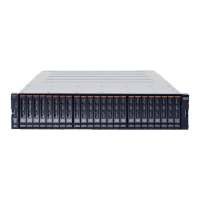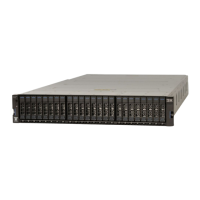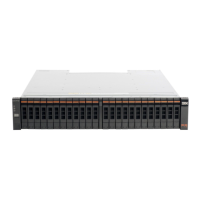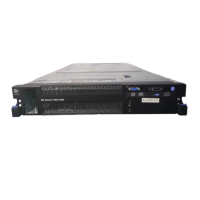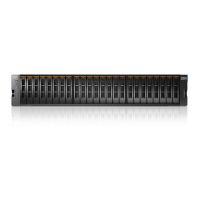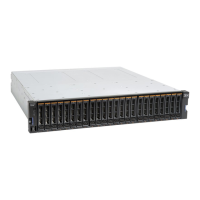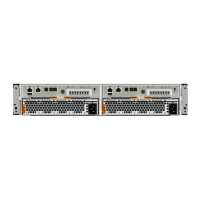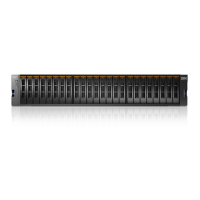This CLI command creates a log file in the /tmp directory of the configuration
node. The name of the log file is svc.config.restore.execute.log.
17. Issue the following command to copy the log file to another server that is
accessible to the system:
pscp superuser@cluster_ip:/tmp/svc.config.restore.execute.log
full_path_for_where_to_copy_log_files
18. Open the log file from the server where the copy is now stored.
19. Check the log file to ensure that no errors or warnings have occurred.
Note: You might receive a warning stating that a licensed feature is not
enabled. This message means that after the recovery process, the current
license settings do not match the previous license settings. The recovery
process continues normally and you can enter the correct license settings in
the management GUI at a later time.
When you log into the CLI again over SSH, you see this output:
IBM_2076:your_cluster_name:superuser>
20. After the configuration is restored, verify that the quorum disks are restored
to the MDisks that you want by using the lsquorum command. To restore the
quorum disks to the correct MDisks, issue the appropriate chquorum CLI
commands.
What to do next
You can remove any unwanted configuration backup and restore files from the
/tmp directory on your configuration by issuing the following CLI command:
svcconfig clear -all
Deleting backup configuration files using the CLI
You can use the command-line interface (CLI) to delete backup configuration files.
About this task
Perform the following steps to delete backup configuration files:
Procedure
1. Issue the following command to log on to the system:
plink -i ssh_private_key_file superuser@cluster_ip
where ssh_private_key_file is the name of the SSH private key file for the
superuser and cluster_ip is the IP address or DNS name of the clustered system
from which you want to delete the configuration.
2. Issue the following CLI command to erase all of the files that are stored in the
/tmp directory:
svconfig clear -all
84 Storwize V7000: Troubleshooting, Recovery, and Maintenance Guide
